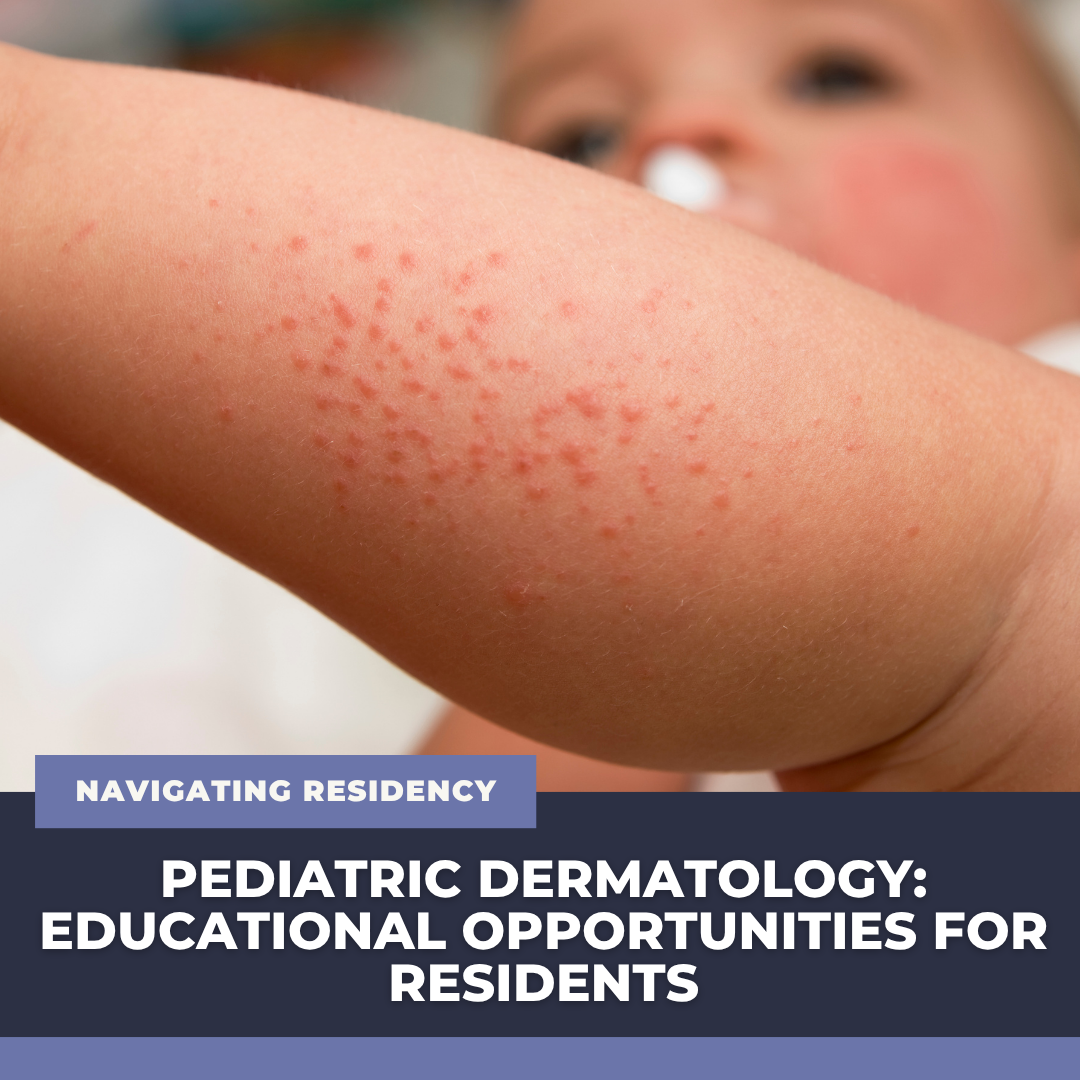Pediatric dermatology exposure varies widely between residency programs. While some residents may plan to pursue a pediatric dermatology fellowship, the majority will not. Despite this, most dermatologists will see a mixture of children and adolescents in their clinic. Whether you plan to focus on complex medical dermatology, general dermatology, procedural work, or anything in between, developing confidence in treating pediatric patients is paramount.
There are numerous opportunities, both formal and informal, to expand your knowledge and skills in pediatric dermatology, regardless of your future subspecialty.
-
- Society for Pediatric Dermatology (SPD) Annual Meeting and Pre-Conference Resident Forum: The SPD’s annual meeting is a must for anyone interested in pediatric dermatology. The resident-specific forum offers high-yield, practical lectures designed for trainees. Residents receive discounted rates, and the networking opportunities are unmatched.
- AAP Section on Dermatology: This resource has a host of learning opportunities from CME to webinars to clinical case discussions. This is a great avenue for dermatology residents to learn from pediatricians and dermatologists working together.
- Pediatric Dermatology Fellowships and Rotations: Even if you aren’t planning to specialize in pediatric dermatology, consider doing an elective rotation at a children’s hospital or a program with a strong pediatric dermatology presence. Many institutions are happy to host outside rotators, and even a one-week experience can be immensely valuable.
- SPD Resident Education Series and Virtual Didactics: The SPD has developed a free, high-quality virtual curriculum aimed at dermatology residents. These sessions are case-based, practical, and often led by leaders in the field.
- Textbooks and Atlases: Consider investing time in reviewing pediatric dermatology chapters in Bolognia, and resources like Hurwitz Clinical Pediatric Dermatology or Pediatric Dermatology: A Quick Reference Guide from the AAP.
- Shadowing Opportunities and Local Mentors: If your home program has limited pediatric volume, ask pediatric dermatologists in your region if you can shadow in their clinic. Even informal exposure can help build comfort with pediatric diagnoses and management approaches.
Even if you don’t plan to practice pediatric dermatology exclusively, many of us will be the first (or only) dermatologic resource for children in our communities. Understanding how to approach common pediatric conditions, like atopic dermatitis, infantile hemangiomas, or acne in young patients, makes you a better, more confident dermatologist.
Taking time during residency to seek out this education is a wise investment in your future clinical practice, and in the skin health of your youngest patients.
Did you enjoy this article? Find more on Navigating Residency here.

